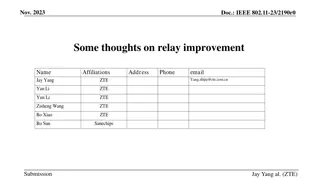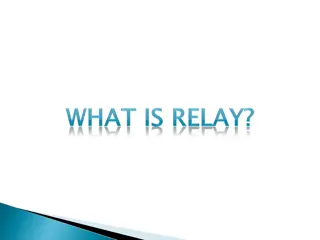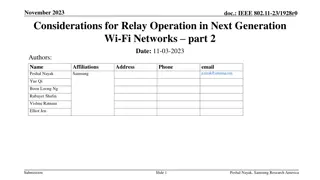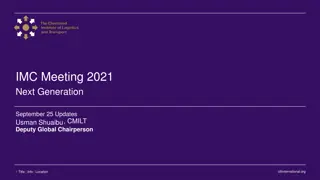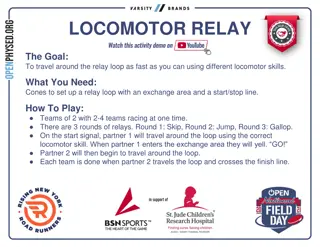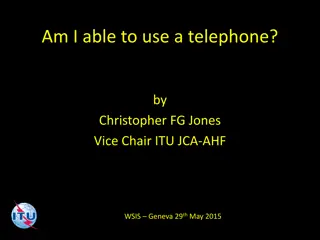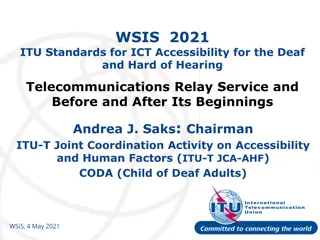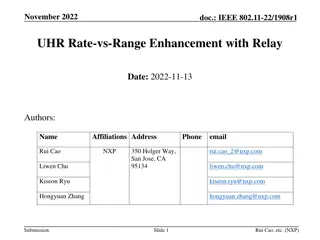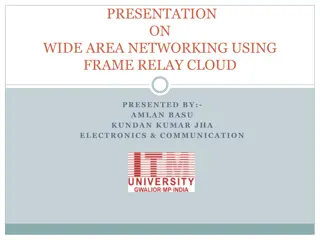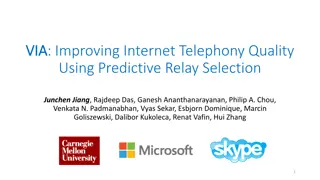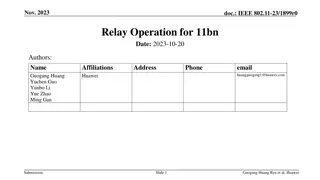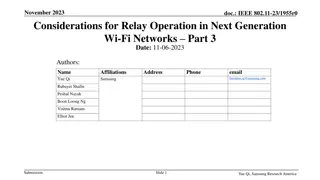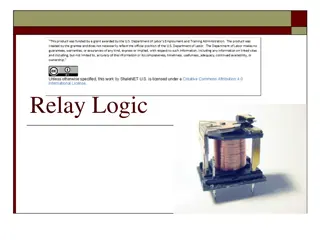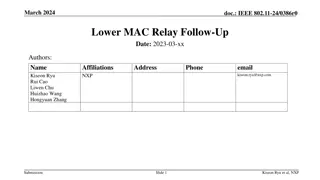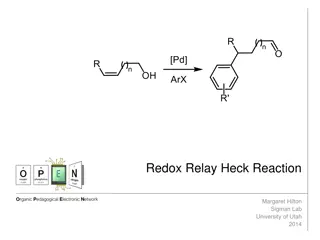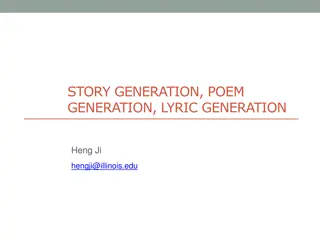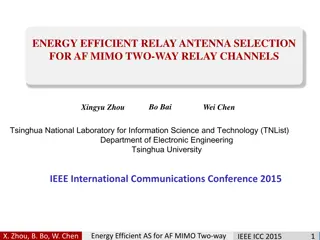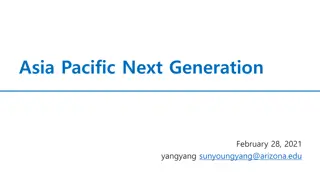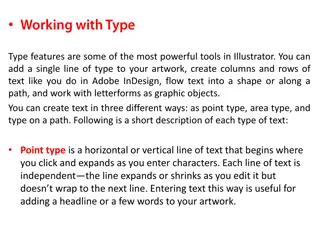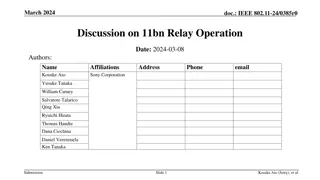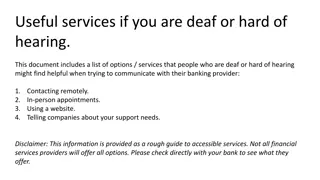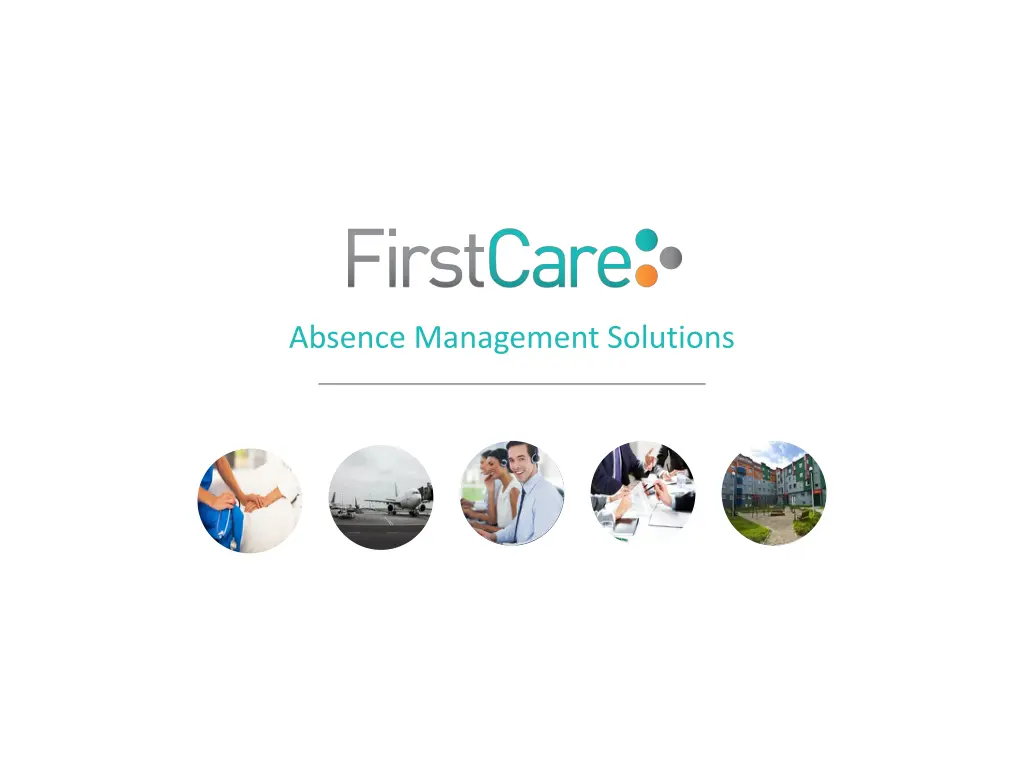
NGTS - Next Generation Text Service for Accessibility
NGTS (Next Generation Text Service) by www.ngts.org.uk provides text-to-speech and speech-to-text translation services for individuals with hearing or speech impairments to communicate over the telephone. Learn how NGTS helps meet the requirements of the Equality Act, enabling equal access to organizations' services. Discover why over 9 million deaf or hard of hearing individuals benefit from NGTS. Find out how the service works, including how inbound calls are handled by Relay Operators.
Uploaded on | 0 Views
Download Presentation

Please find below an Image/Link to download the presentation.
The content on the website is provided AS IS for your information and personal use only. It may not be sold, licensed, or shared on other websites without obtaining consent from the author. If you encounter any issues during the download, it is possible that the publisher has removed the file from their server.
You are allowed to download the files provided on this website for personal or commercial use, subject to the condition that they are used lawfully. All files are the property of their respective owners.
The content on the website is provided AS IS for your information and personal use only. It may not be sold, licensed, or shared on other websites without obtaining consent from the author.
E N D
Presentation Transcript
Absence Management Solutions NGTS www.ngts.org.uk Background The Next Generation Text Service (NGTS) replaced the Text Relay service and works in a similar way for us. NGTS offers text-to-speech and speech-to-text translation services. A relay operator in a call centre acts as an intermediary, enabling people with hearing or speech impairments to communicate with other people over the telephone.
Absence Management Solutions NGTS www.ngts.org.uk Accessing NGTS Service users access text relay via a range of equipment including textphones, PCs, laptops and smartphones; however the devices will need an internet-connection to benefit from all the improvements delivered by next generation text relay.
Absence Management Solutions NGTS www.ngts.org.uk Why do we need to know? NGTS helps us meet the part of the Equality Act that says people who use textphones should have the same access to an organisation's people and services as any other customer or employee. Email, websites and SMS-based communications aren't the same as a voice phone call as they don t involve real-time conversations. NGTS give an equivalent voice phone service for deaf, hard of hearing and speech-impaired people. Over 9 million people are deaf or hard of hearing. Approx. 2.5 million people have permanent or temporary speech impairment. 0.5 million people have a permanent stammer.
Absence Management Solutions NGTS www.ngts.org.uk How does it work? General Service users either dial a prefix to the telephone number (if using the older generation Text Relay Service) or connect directly to the service through devices which connect via the internet. The call is passed through the Text Relay BT Resource Centre. A Relay Operator translates the call from voice to text and text to voice.
Absence Management Solutions NGTS www.ngts.org.uk How does it work? Inbound calls The phone will ring as normal You will hear: Please hold for an operator assisted call from a textphone user A Relay Operator will then explain that this is a Text Relay call and they will be translating for you and will ask you to say Go Ahead to invite a reply They will explain in more detail how the system works if required You should handle the call as though you were speaking with the service user directly.
Absence Management Solutions NGTS www.ngts.org.uk How does it work? Outbound calls FirstCare is notified of employees using the NGTS and identifies them within AMI by this symbol: To make an outbound call, dial 18002 followed by full telephone number (this will only work if they were previously registered with the 18002 service). You will see/hear: TXT Dialling TXT Ringing TXT Operator Connected You will see/hear: This is text relay, your call is connected would you like to go ahead
Absence Management Solutions NGTS www.ngts.org.uk How does it work? Outbound calls When you hear the call has connected, start talking as normal, saying Go Ahead to invite a reply. Those who are already registered to NGTS, will have a TextNumber (11 digits) that will connect automatically to the service without dialling 18002: Landline prefix begins with 03 Mobile prefix begins with 07
Absence Management Solutions NGTS www.ngts.org.uk Etiquette An NGTS call will take longer than a voice to voice call Talk to the textphone user and NOT the Relay Operator Speak clearly and be patient The Relay Operator will type exactly what you say Say Go Ahead to invite a response Do NOT interrupt the Relay Operator, wait for them to say Go Ahead before you speak Say Stop Keying at the end of the call
Absence Management Solutions NGTS www.ngts.org.uk It s worth knowing Most textphone users communicate in text because they can't hear. The language they use varies from standard English to concept based British Sign Language and often means that they get straight to the point and don't pad out conversations with unnecessary words. We need to be aware of this and make sure both we and the caller understand each other. You can find out more on the Action on Hearing Loss website.
Absence Management Solutions NGTS www.ngts.org.uk It s worth knowing All Text Relay calls are confidential Calls are taken in a secure area with restricted access Sound reduction and screen blocks are in place Conversations are not recorded or saved Strict confidentiality clauses in contracts of employment
Absence Management Solutions NGTS www.ngts.org.uk It s worth knowing NGTS Operators are required to have: 40 wpm minimum typing speed 98% accuracy Good Spelling The NGTS Resource Centre has: 24/7 staffing 200 Relay Assistants staffed to match demand Circa 40,000 calls per week
Absence Management Solutions NGTS www.ngts.org.uk NGTS approved presentation This presentation has been approved by NGTS. Approved: June 2015 Reference: I/38192

